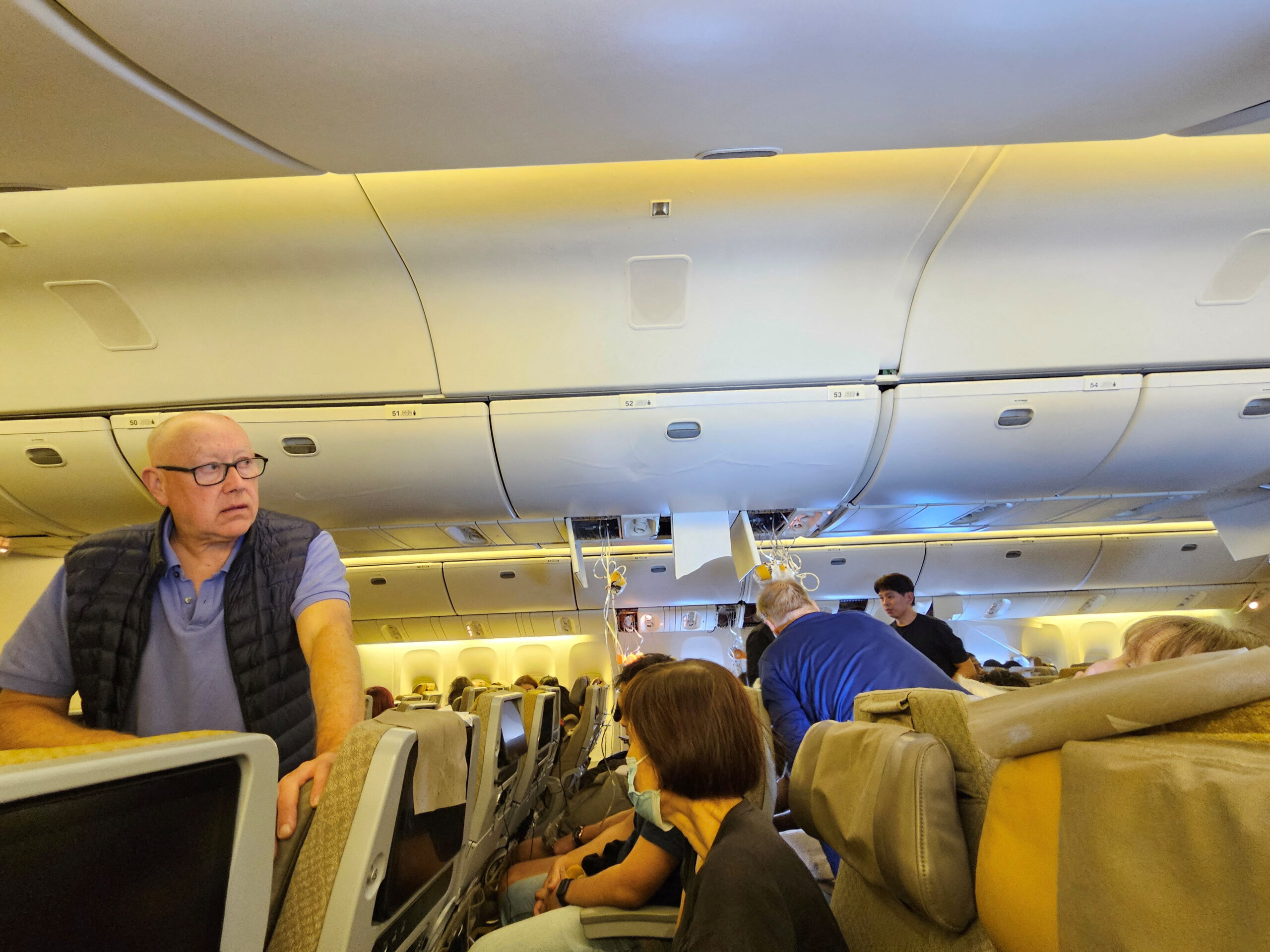What constitutes in-flight turbulence, and at what point does it pose a danger to passengers and crew members?

The recent incident involving a British man’s death and numerous injuries on a Singapore Airlines flight due to severe turbulence has drawn attention to the dangers of flying through unstable air. While the exact cause of the man’s death, possibly a heart attack, is still being investigated, experts point to the significant safety risks posed by in-flight turbulence, particularly evident in the airliner’s sharp descent and the number of injuries reported.
Although fatalities from turbulence are rare, there has been a steady accumulation of injuries over time. Some meteorologists and aviation analysts suggest that the increasing reports of turbulence encounters may be influenced by climate change and its potential impacts on flying conditions.
Turbulence is characterized by unstable air movement, which can be unpredictable. While many people associate it with stormy weather, the most hazardous type is clear-air turbulence, which often occurs without visible warning signs in the sky.
Clear-air turbulence is frequently encountered in or near high-altitude jet streams, where wind shear—a difference in speeds between adjacent air masses—causes the air to become turbulent. This phenomenon creates chaotic air movements, similar to eddies in water.
Although most incidents of turbulence are minor, airlines have continually improved safety measures to reduce accident rates. Experts advise air travelers to remain vigilant and emphasize the importance of wearing seat belts whenever possible as a primary safety measure.
How common are injuries from turbulence?
Tracking the total number of turbulence-related injuries worldwide is challenging, but some individual countries publish national data.
In the United States, more than one-third of all airline incidents from 2009 to 2018 were turbulence-related, according to the National Transportation Safety Board (NTSB). Most of these incidents resulted in one or more serious injuries but no damage to the aircraft.
Between 2009 and 2022, NTSB figures show that 163 people were seriously injured enough during turbulence events to require hospital treatment for at least two days. Most of these injuries were sustained by flight attendants, who are more likely to be out of their seats during flights and thus at higher risk.
Regarding the recent Singapore Airlines flight incident, the Boeing 777-300ER descended 6,000 feet in about three minutes after encountering severe turbulence over the Indian Ocean. Preliminary reports indicated one death and several severe injuries among passengers and crew, with dozens of others sustaining moderate or less serious injuries.
Larry Cornman, a project scientist at the National Center for Atmospheric Research, stated that while minor injuries, such as broken bones, can occur during turbulence encounters, fatalities are extremely rare, especially on large transport aircraft.
According to Stuart Fox of the International Air Transport Association, the last clear-air turbulence-related death reported from a major carrier occurred in 1997. There have been a few fatalities on smaller planes since then, including one on a private jet last year.
Standardized safety procedures, including reviewing weather forecasts, pilots reporting turbulence encounters, and suspending cabin service during rough air, have significantly reduced the number of serious injuries over the years.

Can pilots avoid turbulence?
Pilots use various methods to avoid turbulence, including using weather radar displays and visually identifying and maneuvering around thunderstorms.
However, clear-air turbulence is more challenging to predict and avoid. Doug Moss, a former airline pilot and safety consultant, described it as particularly dangerous because it can occur suddenly, catching people off-guard.
Air traffic controllers often warn pilots after another plane encounters clear-air turbulence. Pilots also monitor upper-level jet streams along their routes for signs of wind shear, planning to fly above, below, or around these areas to avoid turbulence.
Modern aircraft are designed to withstand most turbulence encounters. While cosmetic damage to cabin areas like overhead bins may occur, it typically does not affect the structural integrity of the aircraft.
Is climate change leading to an increase in turbulence?
Some scientists observe a rising number of reported turbulence encounters, with several researchers pointing to potential climate change effects.
Guinn from Embry-Riddle Aeronautical University suggests that climate change might affect the jet stream, increasing wind shear and consequently raising air turbulence.
Paul Williams, an atmospheric science professor at the University of Reading in England, stated on Tuesday that there is “strong evidence that turbulence is increasing due to climate change.” He mentioned that his research team recently found a 55% increase in severe clear-air turbulence in the North Atlantic since 1979. Their projections suggest that severe turbulence in jet streams could double or triple in the coming decades if global conditions continue as expected.
However, other factors could also contribute. Cornman notes that an increase in overall air traffic could lead to more turbulence encounters as the number of flight paths, including those in areas with more turbulence, rises.
How can travelers stay safe?
In short, keep your seat belt fastened. Turbulence can be unpredictable, but experts emphasize that wearing a seat belt is the primary defense measure in the air.
“Planes are generally built to withstand turbulence,” Guinn said, highlighting that passengers not wearing their seat belts is a significant source of in-flight turbulence injuries. While no precaution guarantees safety, wearing a seat belt significantly reduces the risk of serious injuries, he said.
“Remember to wear your seat belt,” Guinn emphasized. “That’s a quick fix to prevent injury.”

